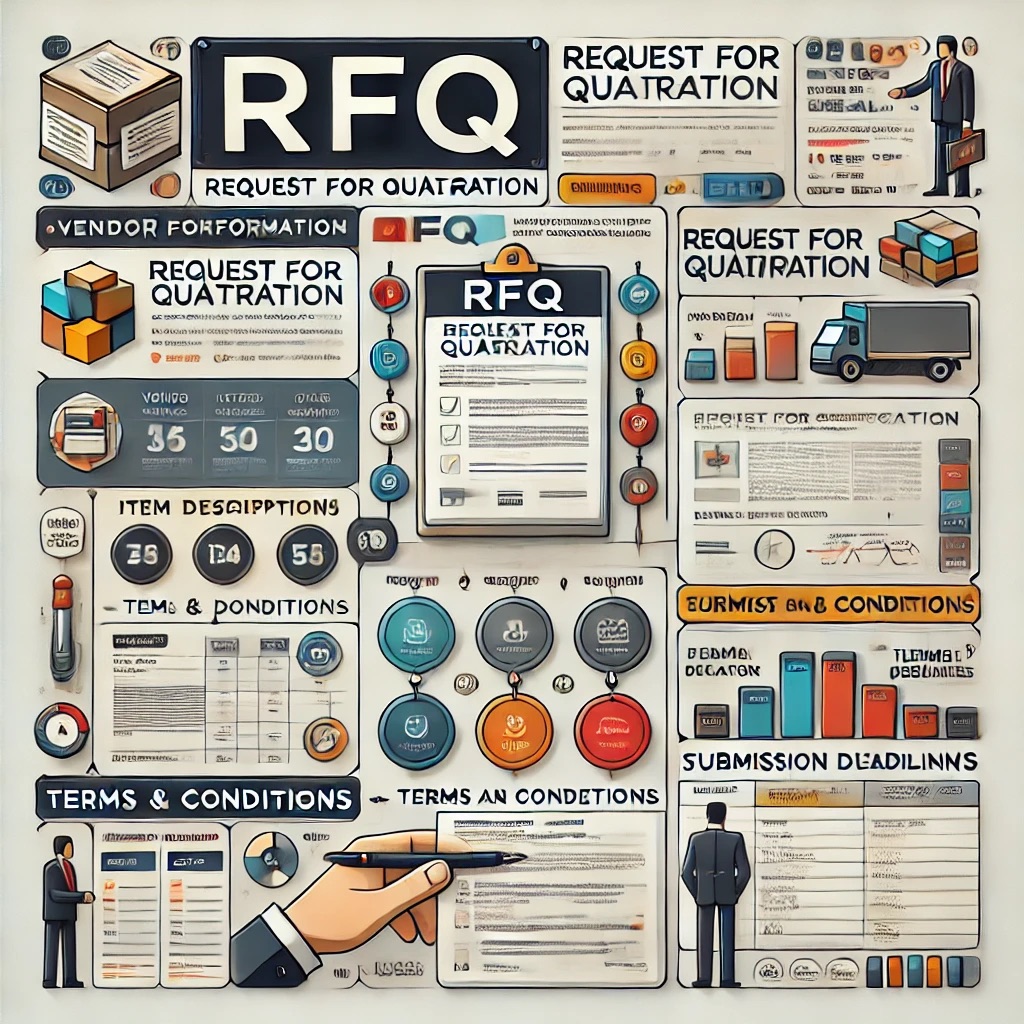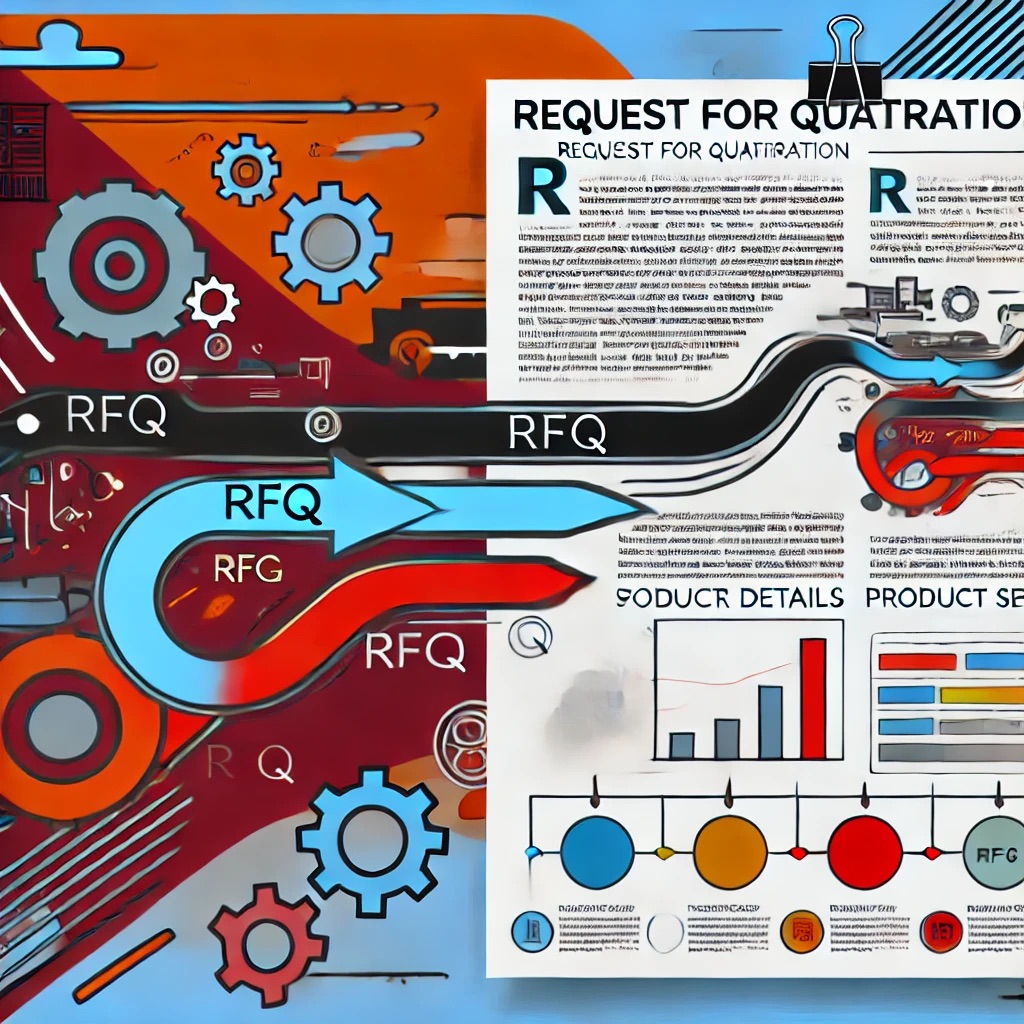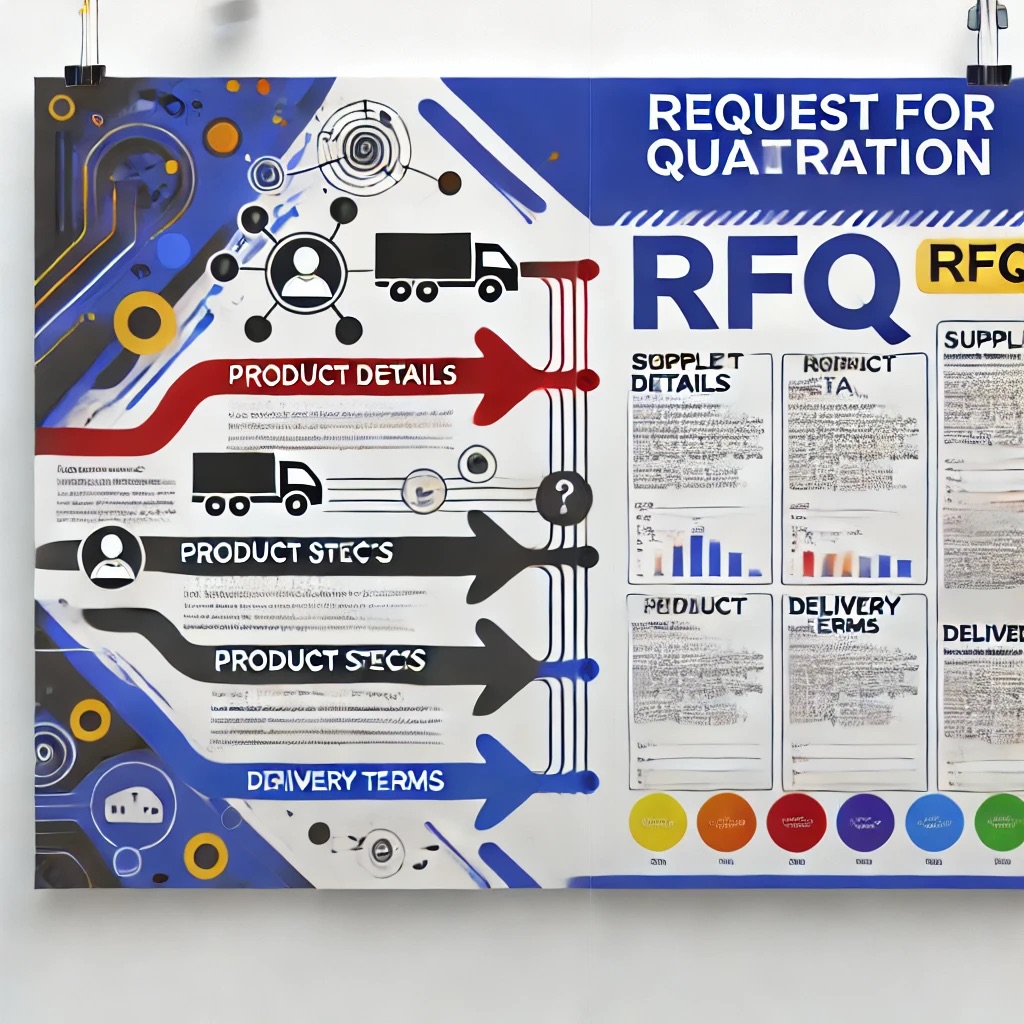Get the Best Deal Using an Effective RFQ Template
 Valcu Denis
Valcu DenisTable of contents

Navigating the procurement process can be challenging, with vendor pricing and payment terms posing hurdles that can derail even the most promising projects. Skilled bidders know how to leverage these complexities to their advantage, which is why having a solid strategy is crucial. One effective tool to streamline vendor communication and secure the best deals is an RFQ (Request for Quote) template.
A well-crafted RFQ simplifies the procurement process, saving you from endless email exchanges and back-and-forth negotiations. It clearly outlines your requirements, helping you efficiently identify and engage the most qualified vendors. Let’s explore how you can use an RFQ to get the best deal possible, along with some helpful templates and strategies.

What Is an RFQ?
An RFQ, or Request for Quote, is a formal document sent to vendors to solicit pricing for specific products or services. It provides vendors with all the necessary details to submit a comprehensive quote. Instead of negotiating with multiple vendors individually, you can use an RFQ to streamline the process, collect detailed proposals, and select the best supplier based on your needs and budget.
RFQ vs. RFP
One common question is: How does an RFQ differ from an RFP (Request for Proposal)? While both documents are used in procurement, they serve distinct purposes:
RFQ: Focuses on gathering pricing information from vendors. It’s typically used when you have a clear understanding of the goods or services you need.
RFP: Goes deeper, asking vendors to propose detailed solutions for a project. An RFP is more suitable for complex projects requiring vendor input on design or strategy.
In essence, you send RFQs to multiple vendors to get pricing information and RFPs to a shortlist of vendors for more comprehensive proposals.

RFQ vs. Statement of Work vs. Scope of Work
It's also essential to distinguish between an RFQ, a Statement of Work (SoW), and a Scope of Work:
Statement of Work (SoW): Outlines the project’s requirements, including deliverables, timelines, and expected outcomes. It lays the groundwork for procurement.
Scope of Work: A section within the SoW that specifies the tasks and activities required to achieve the project goals.
RFQ: Focuses on soliciting vendor quotes for the products or services specified in the SoW.
Why Is an RFQ Template Necessary?
An RFQ template is a time-saving tool that simplifies the vendor selection process. Whether you manage a commercial enterprise or a nonprofit, using an RFQ template can streamline procurement and reduce errors. Here are some benefits:
Efficient Negotiation: An RFQ gives you leverage by setting clear expectations. Vendors compete to offer the best deal, giving you an advantage in negotiations.
Standardization: An RFQ ensures consistency across all vendor communications, making it easier to compare quotes and identify the best option.
Cost Savings: By collecting multiple bids, you can make data-driven decisions and potentially secure lower prices.
Cost Tracking: An RFQ helps you monitor project expenses and ensures vendors adhere to the agreed-upon pricing.
What Software Should You Use?
The best software for creating and managing RFQs is Microsoft Office. With Microsoft Word, Excel, and PowerPoint, you can easily draft, format, and present your RFQ documents. The intuitive interface and robust features make Microsoft Office a staple in the business world.
Don’t worry about learning curves; most office workers are already familiar with these tools. If you’re looking to save on licensing, you can find affordable Microsoft Office keys at RoyalCDKeys, which provide a cost-effective way to get the full suite.
Creating an RFQ: Step-by-Step Guide
Follow these steps to create an effective RFQ:
1. Establish Your Budget
Your budget is a critical element of the RFQ process. Before reaching out to vendors, determine how much your company is willing to spend. This budget will guide vendor selection and help you identify potential cost-saving opportunities.
2. Define Your Needs
Outline the specific goods or services you require. Be as detailed as possible, and consider whether there are any ways to reduce costs, such as providing your own resources or negotiating bulk discounts.
3. Draft the RFQ
When drafting your RFQ, ensure it is comprehensive and leaves no room for misinterpretation. Here are the essential elements to include:
Timeline: Specify the project timeline, including deadlines for vendor submissions and project milestones. This helps vendors allocate resources effectively.
Pricing: Clearly state your budget range and payment terms. Strike a balance between affordability and quality.
Project Goals: Explain the objectives of the project and what you hope to achieve. This helps vendors tailor their proposals to your needs.
Contact Information: Include the best way for vendors to reach you for questions or clarifications.
When to Send an RFQ
RFQs are typically sent out during the project planning phase, once you have a budget and a clear understanding of your needs. Make sure to include all relevant supporting documents, such as technical specifications or design requirements.
Reviewing and Selecting Vendors
Once you’ve received all the bids, review them carefully. Don’t automatically choose the lowest bid; consider factors like the vendor’s reputation, experience, and ability to meet deadlines. Assess each vendor’s proposal based on:
Price: Ensure the quote fits within your budget.
Quality: Evaluate the quality of the proposed goods or services.
Experience: Consider the vendor’s past performance and client reviews.
RFQ Templates
Here are some free RFQ templates to simplify your procurement process:
RFQ Template 1
Overview: A straightforward template ideal for government procurement projects. It’s easy to navigate and doesn’t overwhelm vendors with unnecessary details. Perfect for clear, concise communication.
RFQ Template 2
Overview: A more detailed template suitable for large organizations or complex projects. It includes sections for an executive summary, detailed specifications, and a summary of bids.
RFQ Template 3
Overview: A visually appealing template ideal for design agencies or creative projects. It combines aesthetics with functionality, making it an excellent choice for engaging vendors.
Tips for Creating a Winning RFQ
Personalize the Template: Customize the template to reflect your company’s unique needs and branding.
Provide Clear Instructions: Ensure vendors understand the submission requirements, including deadlines and supporting documentation.
Use Visual Elements: Incorporate tables and bullet points to make the document easy to read.
Review for Accuracy: Double-check for errors or inconsistencies before sending the RFQ.
Conclusion: Why Use an RFQ?
An RFQ is an essential tool in procurement, saving time and ensuring you get the best deal possible. By using a well-structured RFQ template, you can simplify vendor selection and focus on choosing the best fit for your project. Remember, the goal is to make the process efficient and stress-free, leaving room for negotiation and cost-saving opportunities.
Explore our blog for more resources and templates to improve your business operations. We’re always updating our content with practical solutions and expert insights to help you succeed!
Source: RFQ Template - How to Get The Best Deal Possible
Read also our last article: Smooth Job Transitions: Benefits & Essential Templates
Subscribe to my newsletter
Read articles from Valcu Denis directly inside your inbox. Subscribe to the newsletter, and don't miss out.
Written by

Valcu Denis
Valcu Denis
Love writing about tech and gaming.